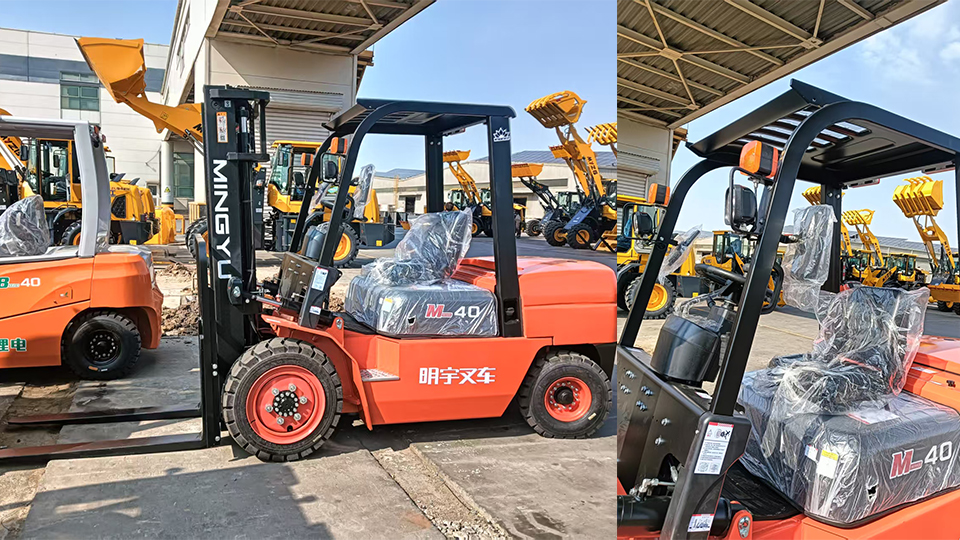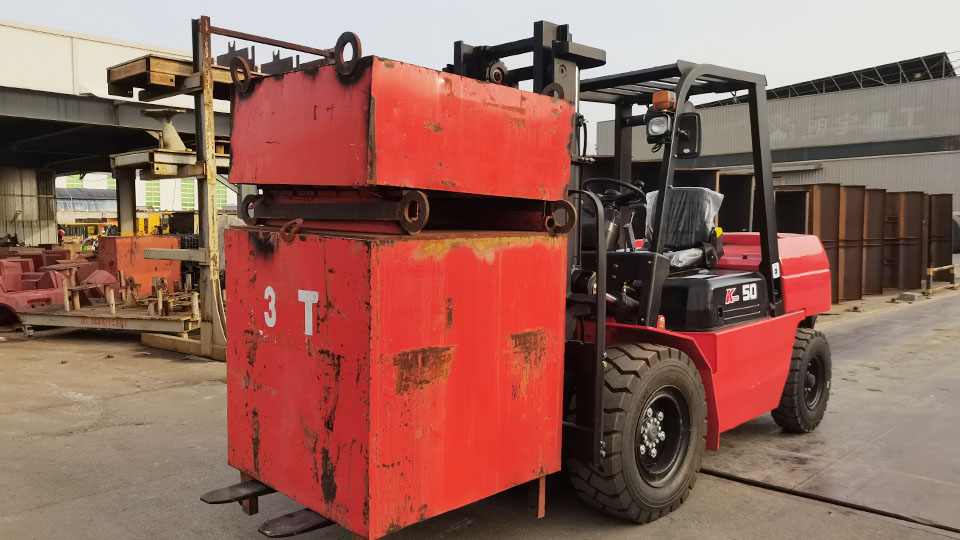
Can You Drive a Forklift While Pregnant? A Technical and Safety AnalysisThe question of whether an individual can continue to operate a forklift (powered industrial truck) while pregnant is a critical concern in industrial and warehouse settings. It requires a nuanced understanding that balances occupational safety, maternal health, fetal well-being, and legal compliance. There is no universal "yes" or "no" answer; the decision depends on a complex interplay of the stage of pregnancy, the specific workplace environment, the type of forklift, and existing safety regulations.1. Primary Concerns and RisksOperating a forklift during pregnancy introduces several distinct physical and environmental risks that must be carefully evaluated.
1.1 Physical Stressors and ErgonomicsRisk FactorMechanism of HarmPregnancy-Specific ImpactWhole-Body Vibration (WBV)Transmitted through the seat and floor of the vehicle, particularly prevalent in rough terrain or older models.Increased risk of low back pain, potential for premature contractions, and theoretical risk of placental abruption (though not definitively proven).Sudden Movements/BrakingRequired for safe load handling and emergency stops.Can cause jarring or jolting, increasing the risk of trauma to the abdomen, particularly as the pregnancy progresses and the center of gravity shifts.Repetitive/Awkward PosturesTwisting the torso to look backward (reverse driving) or manipulate controls.Contributes to musculoskeletal disorders, exacerbates lower back pain, and can put pressure on the growing abdomen.Mounting and DismountingClimbing into and out of the cab multiple times per shift.Increases the risk of falls, especially in later trimesters when balance is compromised and joints are more lax due to hormonal changes (relaxin).Ergonomic StrainOperating foot pedals and hand controls.The changing body shape, particularly increased abdominal size, can make it difficult to comfortably or safely manipulate controls, potentially delaying reaction time.

1.2 Environmental HazardsThe forklift operator's environment adds additional layers of risk:Carbon Monoxide (CO) Exposure: Operating Internal Combustion (IC) forklifts (gasoline, propane, diesel) in enclosed or poorly ventilated spaces can lead to CO exposure. While the mother may experience mild symptoms, the fetus is highly vulnerable, as fetal hemoglobin has a greater affinity for CO than adult hemoglobin, leading to potential hypoxia and developmental harm.Noise Exposure: High noise levels from engine operation or warehouse activity can contribute to maternal stress and fatigue.Heat Stress: Poorly ventilated cabs or working in hot environments can lead to hyperthermia, which is a significant teratogen (substance or factor causing birth defects) in early pregnancy, and can cause dehydration and premature labor later on.2. Physiological Changes and Operational ImpactPregnancy induces significant physiological and biomechanical changes that directly affect an individual's ability to safely operate heavy machinery like a forklift.
2.1 Biomechanical AlterationsCenter of Gravity Shift: As the uterus and abdomen grow, the body’s center of gravity moves forward and upward. This alters posture and gait, reducing stability and increasing the likelihood of imbalance and falls, particularly when climbing or stepping off the forklift.Joint Laxity: The hormone relaxin softens ligaments and joints in preparation for childbirth. While beneficial for delivery, this leads to increased joint instability, making the operator more susceptible to sprains, strains, and chronic pain, especially in the back and pelvis, exacerbated by WBV and awkward postures.
2.2 Functional and Cognitive ChangesFatigue and Nausea: Common, especially in the first and third trimesters, fatigue can impair concentration, judgment, and reaction time, all critical components of safe forklift operation.Visual Obstruction: In later pregnancy, the abdomen can physically impede the operator's view of the ground or controls, or restrict their ability to twist fully to look behind them, which is essential for safe reversing.Increased Risk of Hypotension: The expanding uterus can compress the vena cava when sitting in certain positions (Supine Hypotensive Syndrome), leading to reduced blood flow back to the heart, causing dizziness, faintness, and potentially a loss of consciousness—a catastrophic event while operating machinery.
3. Regulatory and Legal Framework (OSHA and ADA)The workplace must adhere to specific safety and anti-discrimination regulations when dealing with pregnant employees.
3.1 Occupational Safety and Health Administration (OSHA)OSHA does not have a specific standard prohibiting pregnant individuals from driving forklifts. However, OSHA’s General Duty Clause (Section 5(a)(1)) requires employers to "furnish to each of his employees employment and a place of employment which are free from recognized hazards that are causing or are likely to cause death or serious physical harm."If a physician identifies a specific risk (e.g., severe back pain, history of premature labor) that is directly exacerbated by the duties of forklift operation (e.g., WBV, repetitive movement), the employer is obligated to consider this as a "recognized hazard" and implement mitigation measures.The primary responsibility lies with the employer to ensure the task (forklift operation) does not pose a serious physical harm to the employee or the fetus.
3.2 Pregnancy Discrimination Act (PDA) and Americans with Disabilities Act (ADA)These U.S. laws govern how employers must treat pregnant employees:The PDA (Amendment to Title VII of the Civil Rights Act): Requires that pregnant employees be treated the same as other employees similar in their ability or inability to work. An employer cannot force a pregnant operator off the forklift unless they can show that the pregnancy makes her objectively unable to safely perform the essential functions of the job, or if the accommodation causes an undue hardship.The ADA (as amended by the ADAAA): Pregnancy itself is not a disability, but impairments resulting from pregnancy (e.g., gestational diabetes, severe back pain, preeclampsia) may qualify as temporary disabilities. This triggers the employer's requirement to provide reasonable accommodations to the employee.

4. Risk Mitigation and Accommodation StrategiesThe safest and most legally compliant approach involves a tripartite discussion between the employee, her healthcare provider, and the employer/safety officer.
4.1 Medical Clearance and AssessmentDoctor's Note: The employee should obtain documentation from her OB/GYN or midwife detailing any physical restrictions or necessary accommodations related to driving the forklift. This should be specific (e.g., "Limit continuous sitting to 30 minutes," "Avoid exposure to carbon monoxide," "No tasks involving significant jolting/vibration").Regular Re-assessment: As pregnancy progresses, the risks change. Restrictions valid at 15 weeks may be insufficient at 30 weeks. The employee's ability to perform the job should be reviewed regularly.
4.2 Workplace AccommodationsBased on the medical assessment, the employer should consider the following reasonable accommodations:Accommodation CategorySpecific Action/ChangeRisk AddressedEquipment ModificationSwitching the operator to a newer forklift model with a high-quality, air-ride or suspension seat.Whole-Body Vibration (WBV) and Back Strain.Job ModificationReassignment of duties (e.g., inventory counting, administrative tasks, quality control) that do not require operating the forklift, especially in the later trimesters.All physical, postural, and fall risks.Environmental ControlReassigning the operator to an electric forklift and restricting IC forklift use, or ensuring mandatory, high-level ventilation systems are in place.Carbon Monoxide and Fume Exposure.Time and SchedulingIncreased rest breaks to allow for stretching, position changes, and blood flow, or transitioning to part-time work.Fatigue, Joint Laxity, and Hypotension Risk.ErgonomicsInstallation of cushioning or lumbar support, and adjustment of controls/steering wheel to allow for adequate abdominal clearance.Awkward Posture and Abdominal Pressure.5. Conclusion and Best Practice Technical RecommendationCan an individual drive a forklift while pregnant? Yes, provided that a rigorous risk assessment is conducted and all necessary medical and technical accommodations are implemented to eliminate recognized hazards.The best practice technical recommendation is not to rely on a blanket policy, but to adopt a dynamic, staged approach based on the trimester:First Trimester (Weeks 1-12): The primary concerns are extreme fatigue, nausea, and teratogen exposure (CO/Heat). The operator is generally physically capable, but exposure to IC forklifts in poor ventilation should be strictly eliminated.Second Trimester (Weeks 13-27): This is often the period of least risk and most capability.
Focus on ensuring optimal ergonomic seating, providing rest breaks, and monitoring for any signs of pain exacerbated by WBV.Third Trimester (Weeks 28-40+): This is the period of highest risk. The combination of significantly impaired balance, increased abdominal size obstructing movement/view, increased joint laxity, and higher risk of premature contractions makes continuous forklift operation strongly discouraged. Transitioning the employee to a non-driving, light-duty role (reasonable accommodation) is the most protective and technically sound safety measure for the employee and the fetus.The ultimate responsibility for ensuring a safe workplace rests with the employer. By adhering to a comprehensive risk management process that integrates medical expertise with occupational safety principles, workplaces can successfully navigate this complex issue while remaining compliant with anti-discrimination and safety laws. The overarching goal is the prevention of injury or adverse health outcomes for both the mother and the developing fetus.
Name: selena
Mobile:+86-13176910558
Tel:+86-0535-2090977
Whatsapp:8613181602336
Email:vip@mingyuforklift.com
Add:Xiaqiu Town, Laizhou, Yantai City, Shandong Province, China